#kondh
Explore tagged Tumblr posts
Text


Indigenous Mikus by weevildoing on Twitter!

Here is the link to Survival International.
#weevildoing#south america#north america#caribbean#africa#southeast asia#asia#south asia#venezuela#brazil#ethiopia#peru#india#myanmar#argentina#indigenous miku#yanomami miku#taíno miku#chin miku#quechua miku#tehuelche miku#matsés miku#karo miku#dongria kondh miku#rip... this post has so many tags some of them don't show in the search#if you use twitter consider retweeting the image there!
131 notes
·
View notes
Text
Vedanta Group is making significant investments in Odisha, including setting up an aluminium refinery, a smelter, and a university. Through Vedanta Odisha, the group remains dedicated to sustainable development and creating positive impacts on local communities. The group has announced plans to invest approx. INR 1 lakh crore in Odisha and has signed an MoU with the state government for the same. The mining and industrial operations in Vedanta Odisha including the Vedanta Bauxite Mine, play an important role in the company's aluminium expansion plans.
#Vedanta niyamgiri#Vedanta Dongria Kondh#Vedanta Mining Case Odisha#Vedanta fly ash dumping#Vedanta Bauxite Mine#Vedanta langowe#Vedanta OSPCB
0 notes
Text

Three generations - Malia Kondh village, 2023
#original photographers#photographers on tumblr#travel#india#street portrait#b&w photography#portraits#monochrome photography#mother and child#street photography#orissa#odisha#profile picture#blackandwhite
26 notes
·
View notes
Text

Kui woman from the Kutia Kondh tribe of Odisha, India, by dulcimertours
7 notes
·
View notes
Text


Title: Animal with Baskets Date: Late 19th - 20th century
Artist: Artist/maker unknown, Indian, Kondh (Khond)
Medium: Metal alloy, beeswax-thread technique, a regional variation of lost-wax casting (dhokra)
Dimensions:1 5/8 × 1 1/4 × 3 inches (4.1 × 3.2 × 7.6 cm)
Classification: Sculpture
Credit Line: Purchased with the Stella Kramrisch Fund, 2002
Accession Number: 2002-93-6
Geography: Made in Odisha, Kandhamal District, India, Asia
3 notes
·
View notes
Photo

The freeway from Visakhapatnam leaves behind the coast and cuts inward, winding into hills, transferring previous roadside tea stalls and fields. In about 4 hours from the Visakhapatnam, I cross the Andhra-Odisha border into Rayagada and strategy Similiguda in Odisha’s Koraput district. Here, navigation turns into extra intuitive, led much less by maps and extra by remembered landmarks, turns within the street and the occasional instruction from a passing voice. Koraput district in southern Odisha has a layered geography. It is hilly however not alpine, forested with out being impenetrable. It is a spot the place social and ecological landscapes are entangled in on a regular basis life. The indigenous tribes, Paraja, Gadaba, Bonda and Kondh amongst others, have lived right here for hundreds of years. Their presence types the area’s cultural id. I'm headed towards a stretch of highlands that, till not way back, lived primarily within the accounts of seasoned journey travellers. Deomali and Talamali, two placing peaks in Odisha’s Koraput district, lately stepped into the general public eye. The catalyst was cinema. Director SS Rajamouli had chosen these distant elevations as filming places for key scenes in his upcoming mission SSMB29. The consideration was current, however the terrain stays largely untouched by it. A view of Deomali, the very best peak in Odisha’s Koraput district, offering clear views of surrounding hills and valleys. | Photo Credit: KR Deepak Deomali, Odisha’s highest level at 1,672 meters, is about two hours by street from Similiguda. The street to it's manageable, even when barely detached in components. What awaits on the summit, nonetheless, isn't merely a view, however a way of proportion. Hills don't compete right here. They kind sequences, rolling softly towards the horizon, none clamouring for extra consideration than the subsequent. On the morning I attain the highest, mist strikes lazily throughout the decrease valleys, not fairly lifting however by no means fairly settling. The air is dry, faintly chilly and holds the scent of stone and soil. Tourism right here is modest, virtually reluctant. A couple of State-sponsored indicators and a gate announce Deomali as a vacation spot, however there are not any massive business interventions. This, maybe, explains why it was chosen as a key location for the second schedule of SSMB29. According to native authorities, the Odisha schedule of the shoot centred primarily round Talamali, a lesser identified, virtually uncharted mountain high; however now Deomali, too, had movie vans and lighting rigs making sluggish inroads throughout its plains. A view of street resulting in Talamali within the Eastern Ghats in Koraput district in Odisha, providing panoramic views of rolling hills in mist in the course of the monsoon season. | Photo Credit: KR Deepak Soaking within the recent air for an hour, I flip in the direction of Talamali, which is lower than an hour from the identical base. If Deomali is thought in brochures and State tourism circuits, Talamali stays principally undocumented. Yet it might be the extra distinctive of the 2. Locals check with it because the ‘Table-Top Mountain’. The summit is strictly that. Flat, stage, and expansive, not like the rest within the area. There are not any apparent signposts or customer services. The route is thought by those that stay close by. A younger information from the Gadaba tribe accompanies me on the ultimate stretch. His tempo is unhurried, his directions minimal. Talamali A view of Talamali, perched atop the Eastern Gh
0 notes
Text
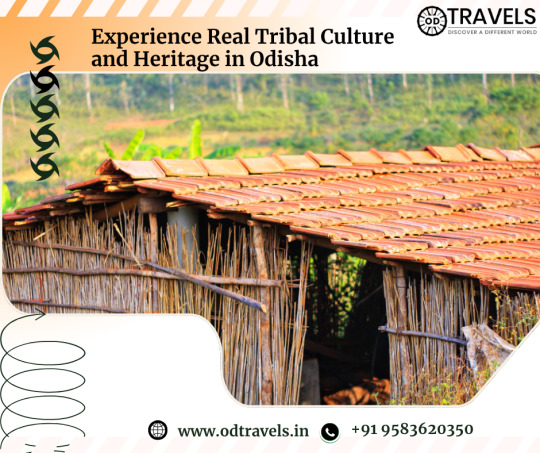
Discover the untouched essence of eastern India through tribal culture and heritage tours in Odisha offered by OD Travels. These tours take you deep into the heart of Odisha’s tribal belt, where age-old customs, vibrant festivals, and indigenous crafts thrive in their most authentic form. From visiting weekly tribal markets and exploring traditional villages to witnessing unique art forms like Saura paintings and Dongria Kondh attire, every journey offers immersive experiences that bridge culture and nature. With expert-guided itineraries curated by OD Travels, travelers gain rare insights into tribal lifestyles that are both captivating and culturally enriching.
0 notes
Text
NHRC seeks ATR from CS on condition of Dongria Kondhs in Odisha
Kendrapara: The National Human Rights Commission (NHRC) has sought an Action Taken Report (ATR) from Odisha Chief Secretary regarding the precarious living conditions of over 10,000 families belonging to the Dongria Kondh community, a Particularly Vulnerable Tribal Group (PVTG). This action follows a petition filed by rights activist Radhakanta Tripathy, which highlighted the persistent…
0 notes
Text
Vizag to Araku Tour Packages "low price"
An Araku tour is a fantastic way to explore the natural beauty, cultural richness, and serene landscapes of Araku Valley, a picturesque hill station in the Eastern Ghats of Andhra Pradesh, India. Here's a comprehensive guide to planning your Araku tour, including the best places to visit, things to do, and travel tips.
Why Visit Araku Valley?
Scenic Beauty: Lush green valleys, coffee plantations, and misty hills.
Pleasant Climate: Cool and refreshing weather year-round, making it a perfect escape from the heat.
Tribal Culture: Home to indigenous tribes like the Dongria Kondh and Porja, offering a glimpse into their unique traditions.
Adventure Activities: Trekking, camping, and exploring caves.
Accessibility: Easily reachable from Visakhapatnam (Vizag), which is well-connected by air, rail, and road.
Best Time to Visit Araku Valley
October to March: The winter season is ideal, with temperatures ranging from 10°C to 20°C.
Monsoon (July–September): The valley looks lush and vibrant, but be cautious of landslides.
Summer (April–June): A great escape from the heat, with temperatures around 25°C to 30°C.
How to Reach Araku Valley
From Visakhapatnam (Vizag):
By Road: Araku is 120 km from Vizag, and the journey takes about 3–4 hours by car or bus. The drive is scenic, with winding roads and tunnels.
By Train: The Araku Valley train ride from Vizag is one of the most scenic routes in India, passing through tunnels, bridges, and lush landscapes.
From Other Cities:
The nearest airport is Visakhapatnam International Airport, which is well-connected to major Indian cities like Hyderabad, Delhi, Mumbai, and Bangalore.
Places to Visit in Araku Valley
Borra Caves
Why Visit: Ancient limestone caves with stunning stalactite and stalagmite formations.
Highlights: Illuminated pathways, natural Shiva Lingam, and breathtaking views.
Katiki Waterfalls
Why Visit: A serene waterfall surrounded by lush greenery, perfect for nature lovers.
Highlights: Short trek to the falls, ideal for photography.
Coffee Plantations
Why Visit: Araku is famous for its organic coffee plantations.
Highlights: Visit the Araku Coffee Museum to learn about coffee cultivation and enjoy freshly brewed coffee.
Padmapuram Gardens
Why Visit: A beautiful garden with tree-top huts and lush greenery.
Highlights: Toy train ride, rose garden, and colonial-era cottages.
Ananthagiri Hills
Why Visit: Known as the birthplace of the River Sarada, it offers stunning views and trekking opportunities.
Highlights: Ananthagiri Temple, trekking trails, and serene atmosphere.
Tribal Museum
Why Visit: Learn about the culture and traditions of the indigenous tribes of Araku.
Highlights: Artifacts, handicrafts, and traditional dance performances.
Chaparai Waterfalls
Why Visit: A picturesque waterfall with natural rock slides, perfect for a refreshing dip.
Highlights: Ideal for picnics and photography.
Galikonda Viewpoint
Why Visit: Offers panoramic views of the Araku Valley.
Highlights: Best visited during sunrise or sunset.
Things to Do in Araku Valley
Trekking: Explore the lush hills and valleys.
Camping: Spend a night under the stars in the serene surroundings.
Toy Train Ride: Enjoy the scenic journey from Vizag to Araku.
Tribal Village Visit: Experience the lifestyle and culture of local tribes.
Photography: Capture the stunning landscapes, waterfalls, and plantations.
Shopping: Buy tribal handicrafts, coffee, and organic honey.
Araku Tour Itinerary
Day 1: Arrival and Local Sightseeing
Arrive in Araku from Vizag.
Visit Borra Caves and Katiki Waterfalls.
Explore the Tribal Museum and Padmapuram Gardens.
Overnight stay in Araku.
Day 2: Nature and Adventure
Visit Ananthagiri Hills and Chaparai Waterfalls.
Explore coffee plantations and the Araku Coffee Museum.
Enjoy a trek or camping experience.
Return to Vizag or stay another night in Araku.
Where to Stay in Araku Valley
Budget: AP Tourism Haritha Valley Resort, Mayuri Hill Resort.
Mid-Range: Araku Nature Camp, Hill Park Resort.
Luxury: The Araku Valley by Taj, Uppada Boutique Resort.
Travel Tips for Araku Tour
Carry Warm Clothes: Evenings and mornings can be chilly.
Wear Comfortable Shoes: Essential for trekking and exploring.
Stay Hydrated: Carry water during outdoor activities.
Respect Local Culture: Be mindful of tribal traditions and customs.
Book in Advance: During peak season (winter), accommodations can fill up quickly.
An Araku tour promises a perfect blend of nature, adventure, and culture. Whether you're a solo traveler, a couple, or a family, Araku Valley offers something for everyone. Let me know if you need more details!
Araku Tour Packages & Vanjangi Tour Packages & Lambasingi Tour Packages
0 notes
Text
Odisha Tour Package: A Complete Guide to the Best Deals and Itineraries
Odisha, an eastern Indian state, is a treasure trove of history, culture, and natural beauty. From the sun-kissed beaches of Puri to the majestic temples of Bhubaneswar and the wildlife sanctuaries of Simlipal , Odisha tourism offers an enriching experience for every traveler. Whether you are a nature lover, a history buff, or a spiritual seeker, an Odisha tour package can provide the perfect blend of experiences to make your trip unforgettable.

Why Choose an Odisha Tour Package?
Odisha is known for its diverse landscapes, rich heritage, and unique traditions. An Odisha tour and travel experience allows you to explore the state’s pristine beauty without the hassle of planning everything on your own. A well-curated Odisha holiday package covers all major attractions, provides comfortable accommodation, and ensures smooth transportation.
Opting for the best Odisha tour package ensures that you get the best deals and a hassle-free journey. Whether you’re looking for a spiritual retreat, an adventure trip, or a cultural experience, there is an ideal package for everyone.
Best Time to Visit Odisha
The best time to visit Odisha is during the winter months, from October to March. The weather is pleasant, making it ideal for sightseeing and outdoor activities. Summers (April to June) can be hot, especially in coastal areas, while the monsoon season (July to September) brings heavy rainfall, which may hinder travel plans.
Popular Odisha Tour Packages
1. Spiritual Odisha Tour Package
Odisha is home to some of India’s most revered temples and pilgrimage sites. A spiritual tour package includes:
Jagannath Temple, Puri – One of the Char Dham pilgrimage sites.
Konark Sun Temple – A UNESCO World Heritage Site.
Lingaraj Temple, Bhubaneswar – A masterpiece of Kalinga architecture.
Chilika Lake – Asia’s largest brackish water lagoon, a paradise for birdwatchers.
Dhauli Hills – The site of Emperor Ashoka’s transformation to Buddhism.
2. Adventure and Wildlife Odisha Tour Package
For wildlife enthusiasts and adventure seekers, this package covers:
Simlipal National Park – A dense forest reserve with waterfalls and wildlife, including tigers and elephants.
Bhitarkanika National Park – Known for its saltwater crocodiles and mangrove forests.
Satkosia Gorge – Ideal for river cruises, jungle safaris, and trekking.
Chandaka Elephant Reserve – A haven for elephant conservation and eco-tourism.
3. Cultural and Heritage Odisha Tour Package
Experience the rich heritage of Odisha with this package, which includes:
Raghurajpur Craft Village – Famous for Pattachitra paintings and handicrafts.
Udayagiri and Khandagiri Caves – Ancient Jain rock-cut caves with inscriptions.
Odisha State Museum – Showcasing artifacts, sculptures, and tribal heritage.
Pipili Village – Known for exquisite applique work.
4. Beach and Coastal Odisha Tour Package
Relax on Odisha’s pristine beaches with this package, covering:
Puri Beach – Famous for its golden sands and vibrant beach markets.
Chandipur Beach – The unique ‘vanishing sea’ phenomenon.
Gopalpur Beach – A tranquil retreat with water sports activities.
Balighai Beach – A serene escape from the city crowds.
5. Tribal Odisha Tour Package
Explore Odisha’s indigenous culture with this package:
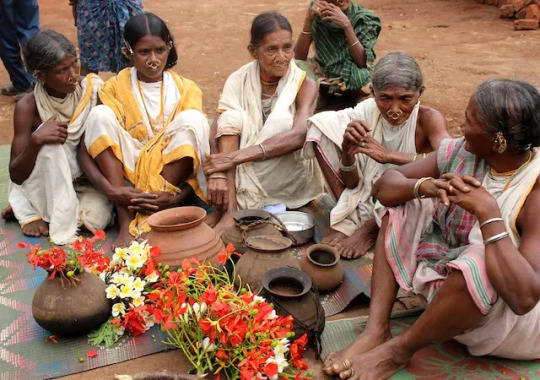
Koraput – Home to the Bonda and Dongria Kondh tribes.
Rayagada – Famous for tribal markets and traditional handicrafts.
Keonjhar – Experience the Santhal and Ho tribes’ customs and traditions.
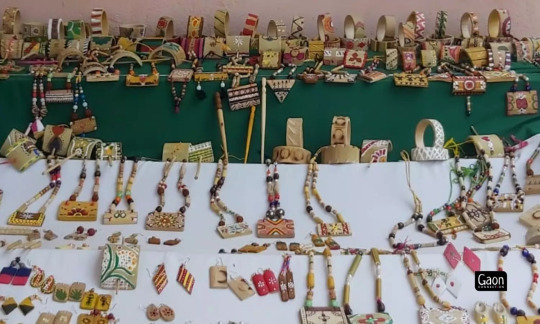
Best Travel Agent in Puri for Odisha Tour Packages
Puri is a major tourist hub in Odisha, attracting thousands of visitors annually. Choosing the best travel agent in Puri ensures that you get the most reliable services, local insights, and the best deals on Odisha tour and travel packages. Some of the top-rated travel agents in Puri offer customized packages that include accommodation, sightseeing, and transportation.
How to Choose the Best Odisha tour package
When selecting an Odisha tour package, consider the following factors:
Duration of the Tour – Choose a package that fits your schedule, whether it's a weekend getaway or a 10-day exploration.
Budget – Options range from budget-friendly to luxury packages.
Inclusions – Check if the package covers accommodation, meals, transportation, and sightseeing.
Customization – Some tour operators offer tailor-made itineraries based on your interests.
Tips for an Amazing Odisha Travel Experience
Plan Ahead: Book your Odisha holiday package in advance, especially during peak season.
Respect Local Culture: Odisha has deep-rooted traditions; be respectful when visiting temples and interacting with locals.
Try Local Cuisine: Don’t miss authentic Odia delicacies like Dalma, Chhena Poda, and seafood specialties.
Pack Smart: Carry comfortable clothing, sunscreen, and necessary travel documents.
Stay Connected: Opt for a local SIM card or check for internet connectivity options to stay in touch.
Final Thoughts
Odisha is a hiddGo Odisha Holidaysen gem waiting to be explored. Whether you're drawn to its spiritual sites, stunning beaches, rich tribal culture, or diverse wildlife, an Odisha tour package provides a seamless travel experience. Choosing the best Odisha tour package with a trusted travel agent in Puri willr Odisha adventure today and immerse yourself in the enchanting beauty of this incredible state! ensure a hassle-free and memorable journey.
Start planning you
1 note
·
View note
Text
Kuvi is a Dravidian language primarily spoken by the Kondh tribes in the eastern part of India, particularly in the states of Odisha and Andhra Pradesh. As a significant part of the South-Central Dravidian subgroup, Kuvi holds a prominent place among the tribal languages of India. For more, visit the link below:
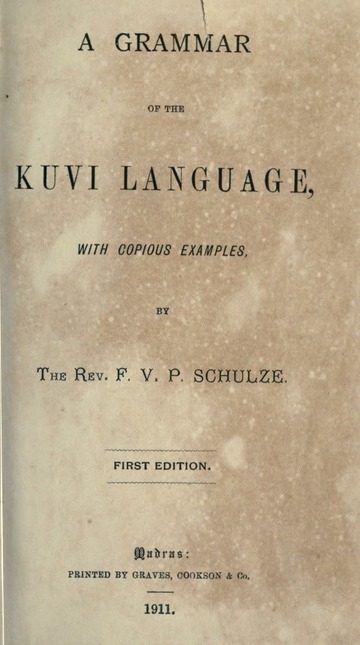
0 notes
Text
Vedanta Group is making significant investments in Odisha, including setting up an aluminium refinery, a smelter, and a university. Through Vedanta Odisha, the group remains dedicated to sustainable development and creating positive impacts on local communities. The group has announced plans to invest approx. INR 1 lakh crore in Odisha and has signed an MoU with the state government for the same. The mining and industrial operations in Vedanta Odisha including the Vedanta Bauxite Mine, play an important role in the company's aluminium expansion plans.
#Vedanta niyamgiri#Vedanta Dongria Kondh#Vedanta Mining Case Odisha#Vedanta fly ash dumping#Vedanta Bauxite Mine#Vedanta langowe#Vedanta OSPCB
0 notes
Text
When it comes to immersing yourself in the vibrant tapestry of cultures and traditions, few places can rival Odisha in India. Known for its rich tribal heritage, this eastern state is a treasure trove for those seeking authentic cultural experiences. From ancient rituals to fascinating art forms, Odisha’s tribal communities offer a glimpse into a world that is both captivating and unique. If you’re an avid traveler with a penchant for offbeat destinations, a tribal tour in Odisha is an experience you shouldn’t miss.
0 notes
Text
17 products from Odisha, Arunachal Pradesh, West Bengal, and J&K have received the Geographical Indication (GI) tag
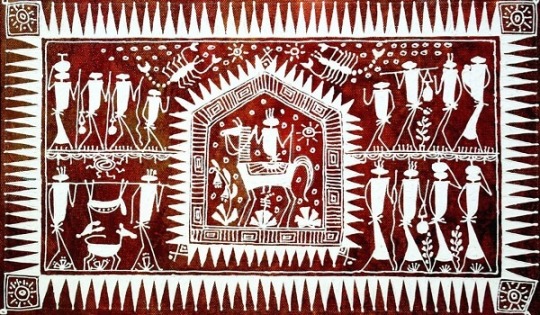
Over 17 products from Odisha, Arunachal Pradesh, West Bengal, and J&K have received the Geographical Indication (GI) tag. Products have Received the GI Tags from Odisha Kapdaganda Shawl - Woven and embroidered by the women of the Dongria Kondh tribe, a Particularly Vulnerable Tribal Group (PVTG) in the Niyamgiri hills in Odisha’s Rayagada and Kalahandi districts, the shawl reflects the rich tribal heritage of the Dongria Kondhs. Lanjia Saura Painting - The art form belongs to the Lanjia Saura community, a PVTG largely residing in the Rayagada district. - These paintings are in the form of exterior murals painted on the mud walls of homes. White paintings figure over a crimson-maroon background. Koraput Kala Jeera Rice - The black-coloured rice variety, also known as the ‘Prince of Rice’, is famous for its aroma, taste, texture and nutritional value. - Tribal farmers of the Koraput region have preserved the rice variety for around 1,000 years. Similipal Kai Chutney - The chutney made with red weaver ants is a traditional delicacy of the tribals in Odisha’s Mayurbhanj district. These ants are found in the forests of Mayurbhanj, including in the Similipal forests. Nayagarh Kanteimundi Brinjal - This Brinjal is known for its prickly thorns on the stems and the whole plant. The plants are resistant to major insects and can be grown with minimal pesticide. Odisha Khajuri Guda - Odisha’s “Khajuri Guda” or jaggery is a natural sweetener extracted from date palm trees and has its origin in the Gajapati district. Dhenkanal Magji - It is a type of sweet made from cheese from buffalo milk, with distinct characteristics in terms of appearance, taste, flavour, shape, and size. Other Products Which Received GI Tag StateProduct NameBrief ExplanationArunachal PradeshWancho Wooden CraftEthnic wood craft integral to Wancho tribes, used for decoration and gifting, historically used in various aspects of their community life.Adi KekirGinger variety from Arunachal Pradesh.West BengalTangail SareeSaree style originating from Bengal with distinct weaving patterns.Garad SareeSaree, known for its unique texture and appearance, is a traditional attire from Bengal.Korial SareeSaree variety is recognized for its weaving style and traditional significance in Bengal.Kalo Nunia RiceRice variety from West Bengal.Sundarban HoneyHoney sourced from the Sundarbans area of West Bengal.GujaratKachchhi KharekProduct of date palm harvested at Khalal (fresh stage), which are bold, crisp and sweet.Jammu KashmirRamban AnardanaRamban Anardana, locally referred to as Dhruni, is an important fruit tree growing wild in hilly tracts and forests of J&K. Read the full article
0 notes
Text
Dive into Odisha’s Tribal Legacy with OD Travels
Discover the untouched beauty of Eastern India through tribal culture and heritage tours in Odisha with OD Travels. These tours offer a unique opportunity to witness the authentic lifestyle, traditions, and art forms of Odisha’s indigenous communities, many of which remain untouched by modernity.
Odisha is home to over 60 tribal communities, each with its distinct language, customs, and rituals. From the vibrant Dongria Kondh to the artistic Saura tribes, the state presents a living museum of cultural richness. Travelers can explore weekly tribal markets, attend traditional dance performances, and even participate in local ceremonies—an experience that goes beyond sightseeing.
With OD Travels, every tour is carefully crafted to ensure responsible tourism while creating enriching interactions between visitors and tribal communities. These guided journeys lead to regions like Koraput, Rayagada, and Malkangiri, where natural beauty and cultural heritage exist in harmony.
Whether you're a culture enthusiast, anthropologist, or just a curious traveler, these tours offer a deep dive into a world where time seems to stand still. Learn about the traditional handicrafts, explore sacred groves, and listen to stories passed down through generations.
Book your unforgettable journey into the heart of Odisha’s tribal lands with OD Travels, and let the experience transform the way you see the world.
#TribalToursOdisha#TribalCultureOdisha#HeritageToursOdisha#ODTravels#CulturalTravelOdisha#OdishaTribes#TribalExperienceIndia
0 notes
Text
Woman turns beacon of hope for Dongria Kondhs
Rayagada: In the foothills of Niyamgiri in Rayagada district, Lahari Kundika, a 44-year-old resident of Khambeasi village in Bissamcuttack block, has turned into a ray of hope for the underprivileged Dongria Kondh tribal community. Despite being uneducated, Lahari is actively raising awareness among the tribals about education, health, and development. Concerned about the decline of Dongria Kondh…
0 notes